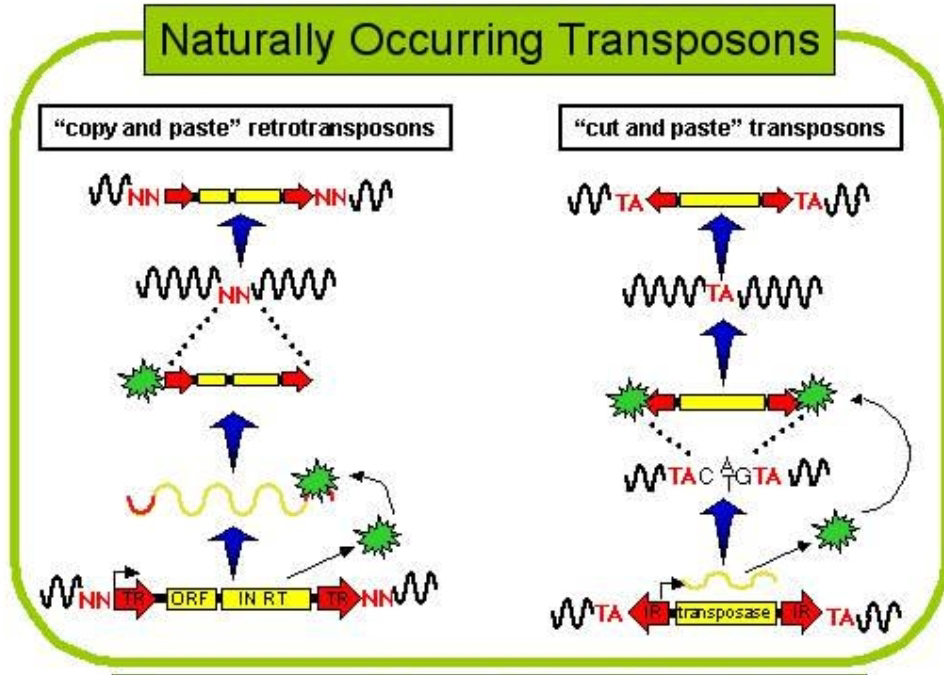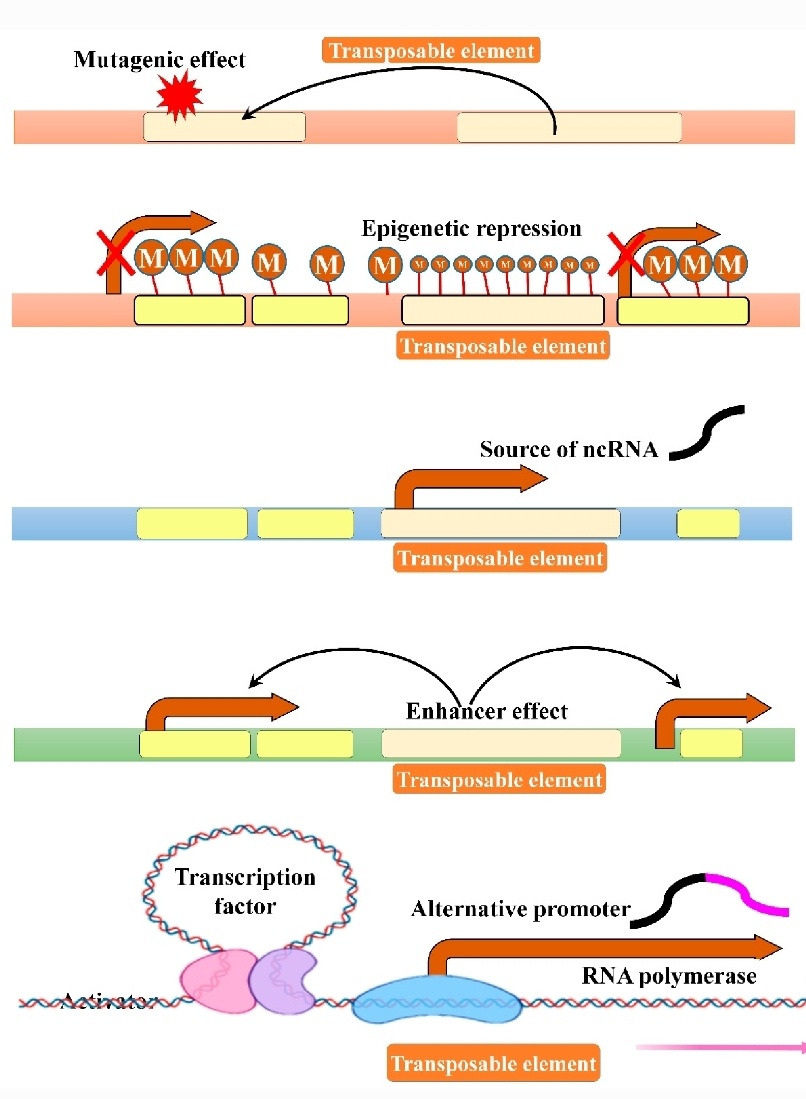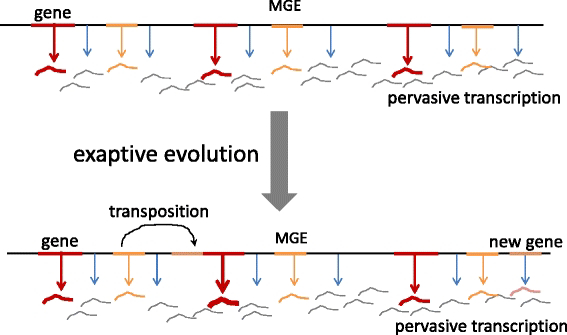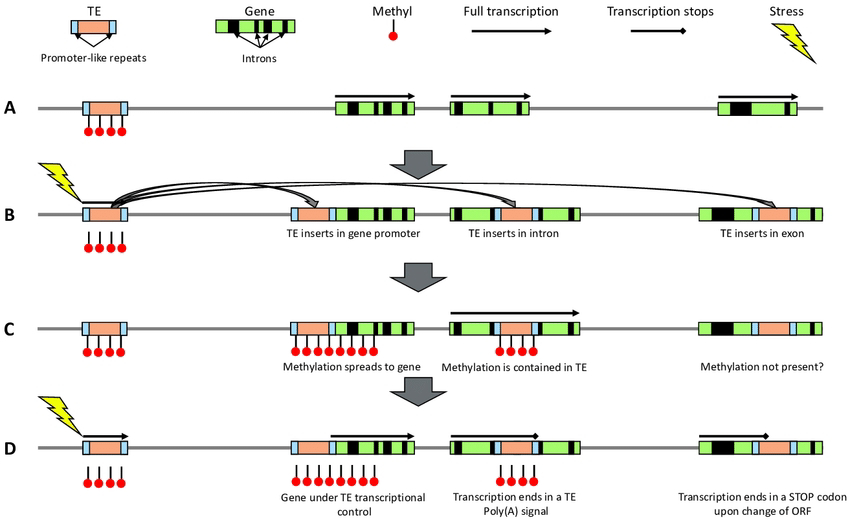Unveiling the Dynamic Dance: Bursts of Transposition in Transposable Element Families
The intricate world of genetics harbors fascinating elements, each playing a crucial role in the symphony of life. Among these are transposable elements (TEs), often referred to as "jumping genes" or “Junk DNA” due to their remarkable ability to move within and sometimes between the genomes of organisms. This inherent dynamism of TEs holds immense significance, impacting various aspects of evolution, including genome structure, gene regulation, and even speciation. Within this intricate tapestry, a captivating phenomenon emerges – bursts of transposition.
As this journal article aptly points out, bursts of transposition represent a sudden and rapid increase in the copy number of one or several TE families within a genome. This signifies a period of heightened activity where TEs are mobilizing and inserting themselves at various locations. This phenomenon, though seemingly chaotic, holds immense biological significance and warrants closer examination.
Understanding the mechanisms behind bursts of transposition is crucial. TEs can mobilize through various pathways, broadly categorized as copy-and-paste and cut-and-paste.
In the former, the TE replicates itself before inserting the copy elsewhere, leaving the original intact. In the latter, the TE excises itself from its current location and inserts itself at a new site. These mobilization events are tightly regulated by epigenetics and specific proteins encoded within the TE itself or by the host organism.
However, under certain conditions, these regulatory mechanisms can become deregulated, leading to a surge in TE activity and, consequently, a burst of transposition.
Several factors are known to contribute to such deregulation. Environmental stress can be a potent trigger, as organisms grapple to adapt to adverse conditions. This stress can lead to changes in cellular pathways that inadvertently activate TE mobilization. Additionally, genomic events like mutations or deletions in regulatory elements can loosen the grip on TE activity, paving the way for bursts. Moreover, interactions between TEs themselves can be another contributing factor. Certain TEs encode proteins that can mobilize other TEs, leading to a domino effect and amplifying their overall activity.
The consequences of bursts of transposition are multifaceted. The most immediate outcome is the expansion of the TE family itself, leading to an increase in its overall representation within the genome. This can impact the stability and size of the genome, potentially leading to insertions and deletions that disrupt existing genes or regulatory sequences. Additionally, bursts can alter gene expression by physically disrupting genes, acting as enhancers or silencers, or altering chromatin structure. These effects can have significant consequences for the organism's phenotype, potentially impacting its development, health, and even survival.
However, the story of bursts of transposition is not solely one of disruption. These events can also be engines of innovation. The insertion of TEs can introduce new regulatory elements or even novel sequences that can be co-opted by the host organism for various purposes. This exaptation, as it is called, can lead to the emergence of new traits or functions, contributing to the organism's evolutionary potential.
Bursts of transposition represent a captivating phenomenon within the realm of genetics. These sudden surges in TE activity hold the potential to both disrupt and innovate, leaving their mark on the genomes and ultimately shaping the evolutionary trajectories of organisms. As research unfolds, unraveling the intricate mechanisms and consequences of bursts will not only enhance our understanding of fundamental biological processes but also pave the way for exciting discoveries in medicine, agriculture, and our understanding of life itself.
Non-Darwinian Epigenetics: Regulating the Explosions of Transposable Elements
The genome harbors a class of "selfish" DNA elements called transposable elements (TEs) that can copy and insert themselves into different locations. While essential for some biological processes, uncontrolled TE activity can disrupt genes and destabilize the genome. The journal article delves into a fascinating phenomenon - "bursts of transposition," where specific TE families experience a surge in activity, defying Darwinian selection, where only advantageous traits are passed on. Here, the focus is on how non-Darwinian epigenetic mechanisms play a crucial role in controlling these TE bursts.
Epigenetic modifications, unlike changes in the DNA sequence itself, are heritable chemical tags that influence gene expression.
These tags can act as a molecular "brake" on TE activity. The article explores how alterations in these epigenetic marks, such as DNA methylation and histone modifications, can trigger bursts of transposition. For instance, a loss of methylation on a specific TE family leads to its sudden activation and proliferation.
Furthermore, the article discusses how these epigenetic changes can be environmentally induced, highlighting the non-genetic aspect of TE bursts. External factors like stress, exposure to toxins, or even aging could potentially alter the epigenetic landscape, leading to bursts of TE activity. This non-Darwinian regulation demonstrates the complex interplay between the environment, epigenetics, and genome stability.
Understanding how non-Darwinian epigenetics governs TE bursts holds significant implications. It can provide insights into the development of diseases associated with uncontrolled TE activity, like cancer. In essence, this research sheds light on a unique mechanism by which the genome regulates its own "selfish DNA," offering a deeper understanding of the intricate dynamics of gene expression and genome integrity.
Beyond Darwin: Epigenetics and TE Bursts as Engines of Change
The journal hints at a fascinating phenomenon challenging the traditional neo-Darwinian view of evolution. It introduces the concept of transposable element (TE) bursts, a non-Darwinian mechanism capable of driving rapid genetic change.
Neo-Darwinism emphasizes the role of random mutations and natural selection in shaping life. This perspective suggests that beneficial mutations accumulate slowly through generations, leading to gradual adaptation. However, TE bursts present an alternative force:
TEs: These are "jumping genes" that can copy and insert themselves elsewhere in the genome.
Bursts: When multiple TE copies arise in a short period, it's termed a "burst." This rapid expansion can significantly alter the genome, potentially impacting gene expression and function.
The journal explores how such non-Darwinian mechanisms, like TE bursts and epigenetics (changes in gene expression that don't alter the DNA sequence), can influence evolution:
Epigenetics: This process can modify gene activity without changing the underlying DNA code as with evolution. It can respond to environmental cues and potentially be inherited across generations, adding a layer of flexibility beyond DNA mutations.
Beyond Neo-Darwinism: These non-Darwinian mechanisms offer alternative pathways for evolution to occur. They suggest that changes can happen rapidly, not solely through the slow accumulation of mutations and natural selection.
This challenges the view that evolution is solely driven by the "survival of the fittest" through gradual adaptation. Instead, it suggests a more complex interplay between various forces, including non-Darwinian processes.
The journal delves deeper into this interplay, exploring how TE bursts and epigenetics might:
Contribute to rapid adaptation: They could introduce significant genetic and phenotypic changes in response to environmental pressures.
Drive diversification: They might provide alternative pathways for genetic variation and speciation events.
Understanding these non-Darwinian mechanisms is crucial for a more comprehensive picture of evolution. They add new dimensions to the story, revealing a dynamic process shaped by diverse forces, not just the slow hand of natural selection.











Comments
Post a Comment